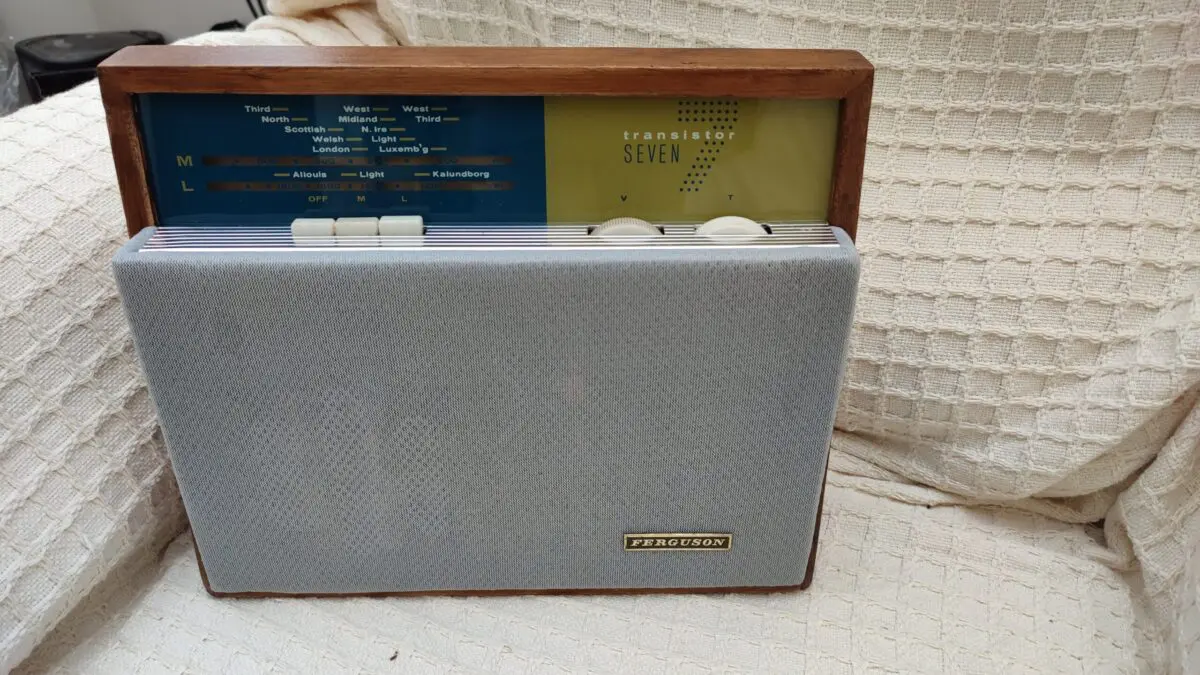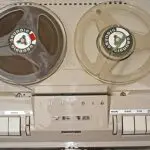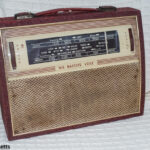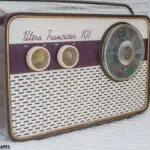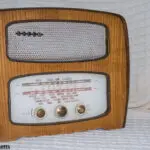The Ferguson Transistor 7 radio, which is also known by the model number 433, was made in about 1961 as a desktop set for the home. It's a two band radio made from a wooden case, with a clear, easily read tuning scale and features an output to connect a tape recorder allowing radio stations to be recorded to tape.
My Ferguson Transistor 7
I bought my copy of this radio from eBay for a very low price because, to be honest, it's a bit of a wreck. The woodwork that the case is made from is loosing its varnish, and the material that covers the speaker and the back case of the radio is tatty and falling off. Obviously, being 60 years old, it also has a fair amount of dirt ingrained into the controls and general bodywork.
Despite this, or possibly because of it, I decided to get the radio because I imagine that if I can get some appropriate material to recover the speaker and back I think I can probably smarten the unit up and make it look like new. The wooden case can easily be sanded down and re-varnished, and the bright metalwork that surrounds the controls looks like it just needs a good clean. The important things like the knobs and the maker's badge are all still in place, so with a bit of effort I think this set can look quite good.
I know the electronics are not working, because I tried connecting a battery to the unit when I first got it, and it's completely dead. I'll take a look at that once I can get the unit apart and start diagnosing the issue, but I'm hopeful I can fix it.
The good thing about radio sets of this vintage is that they are constructed in a way that allows a restorer and vintage radio enthusiast easy access to all the components for measurements and replacement, and this set is no different.
Ferguson Transistor 7 Gallery
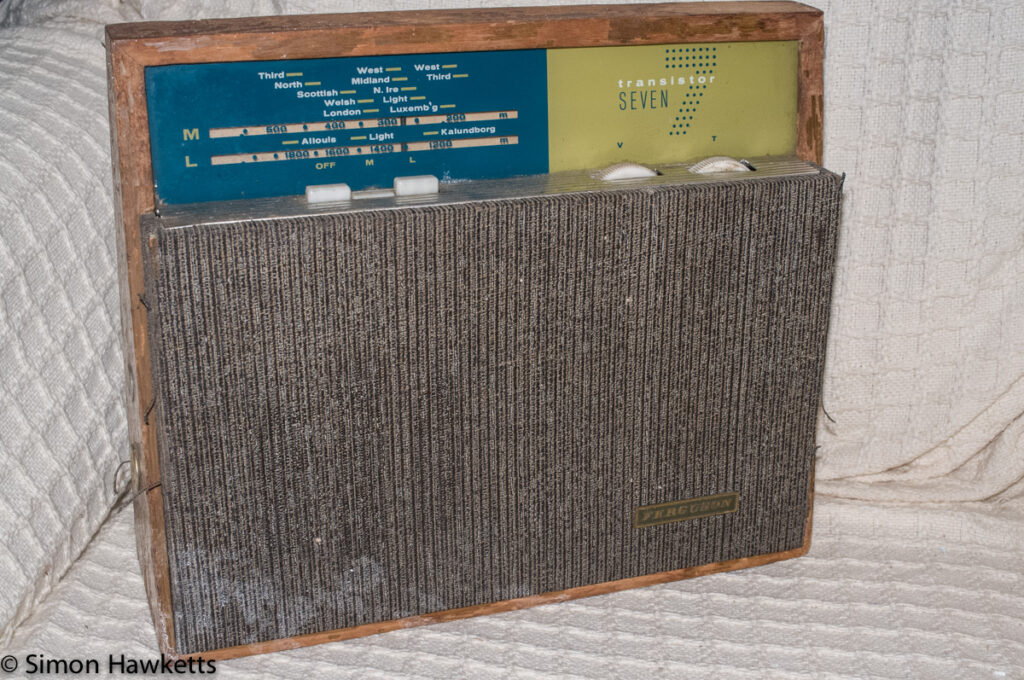
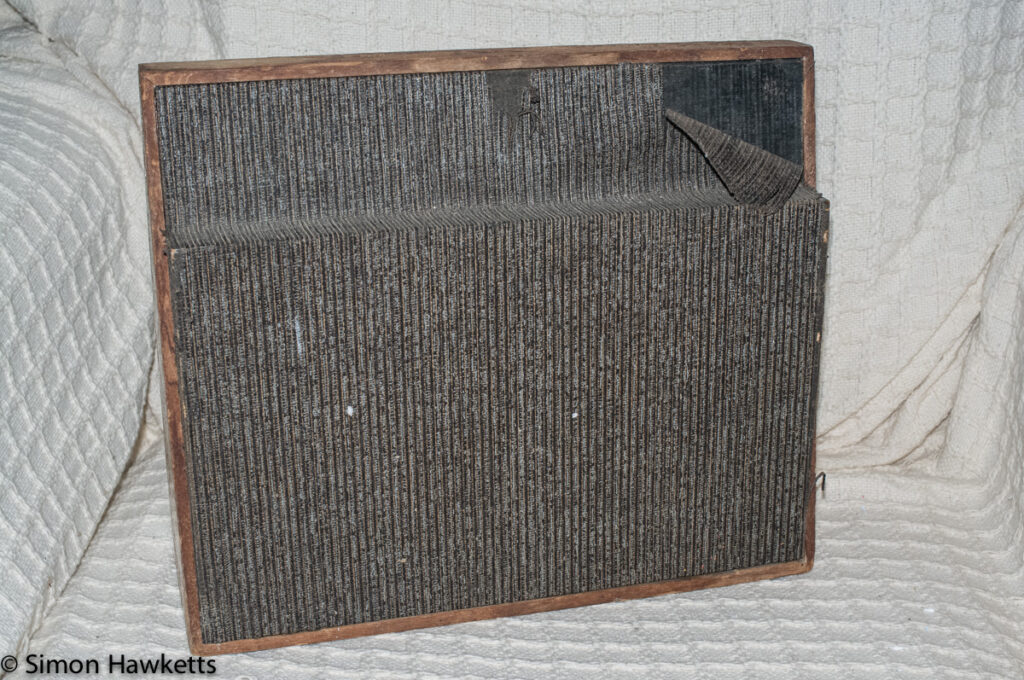
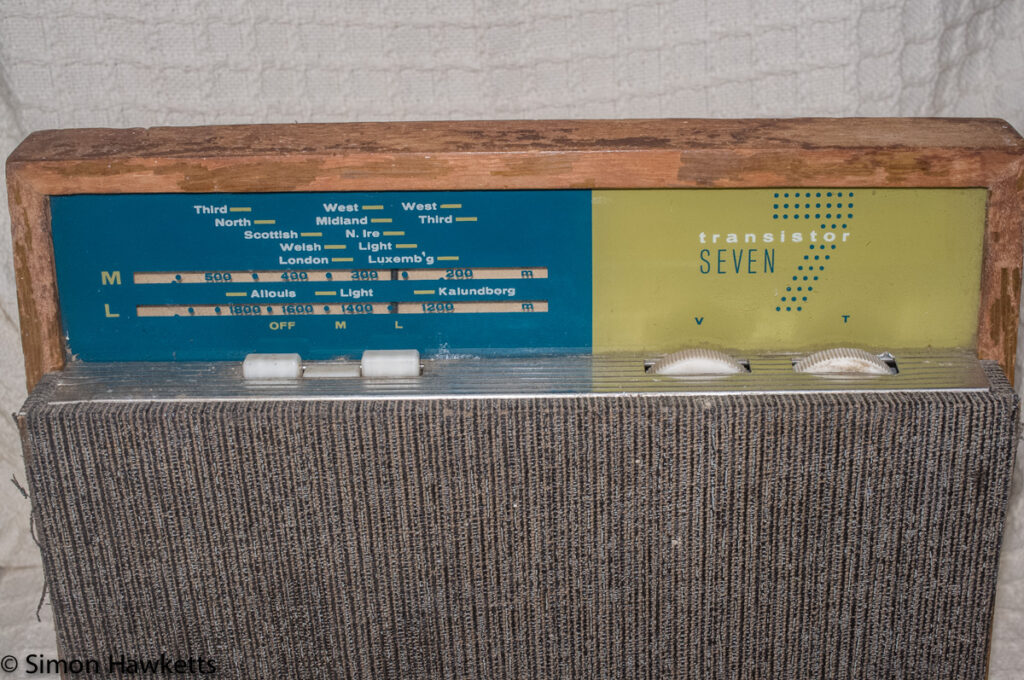
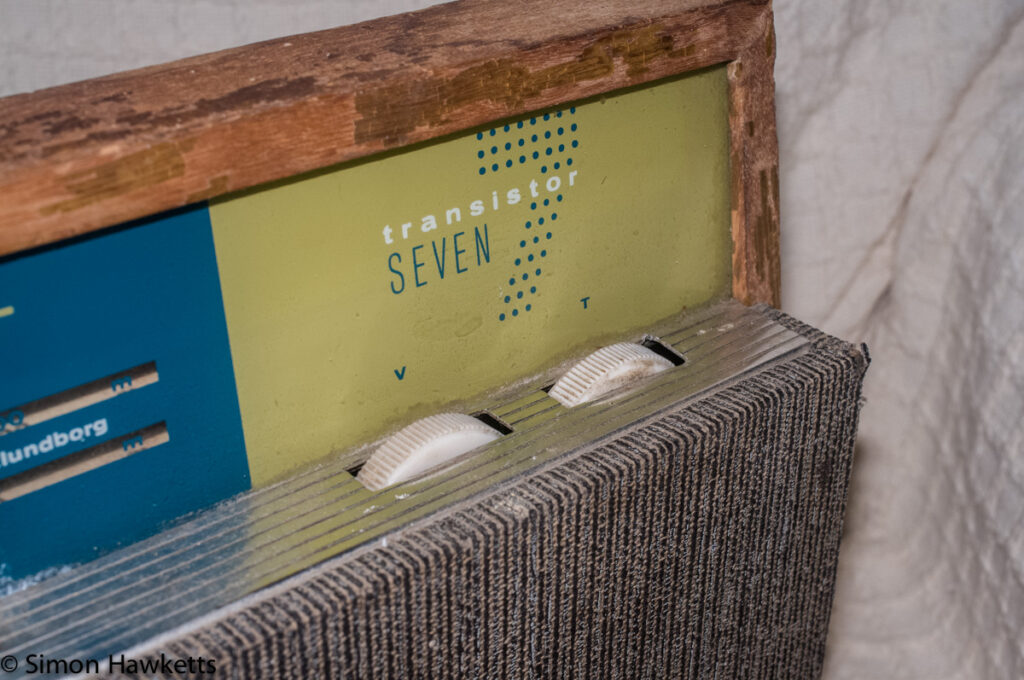
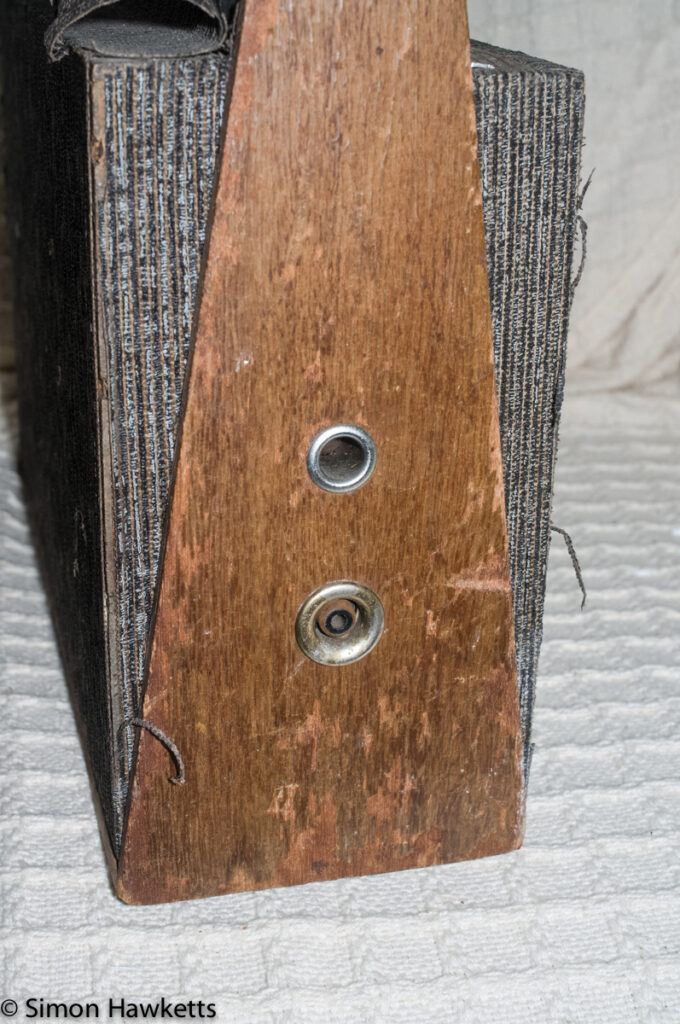

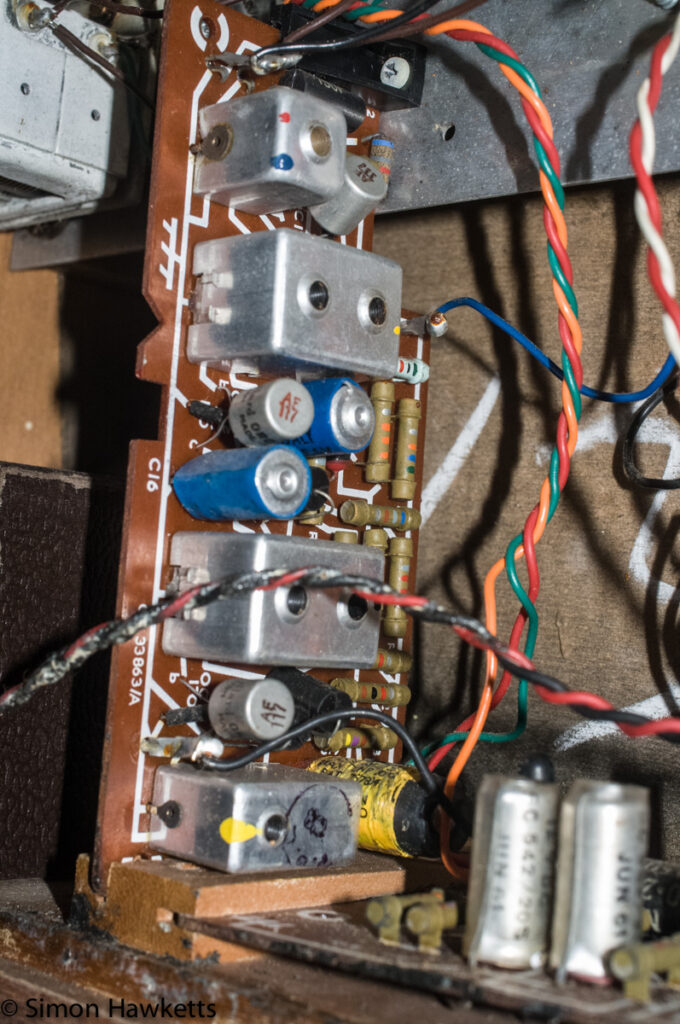
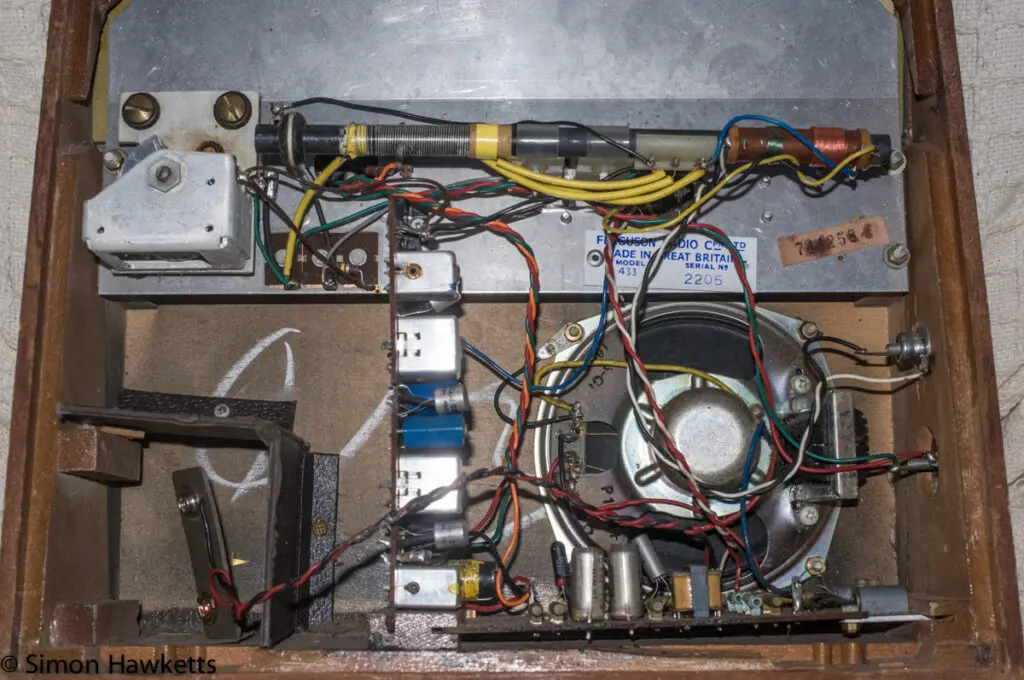
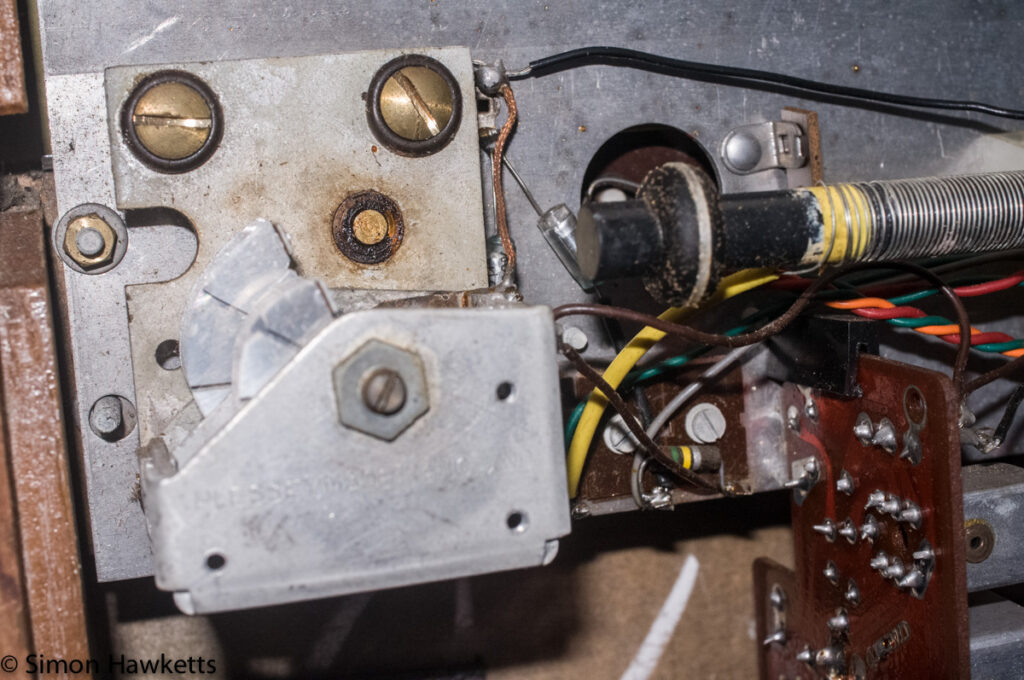

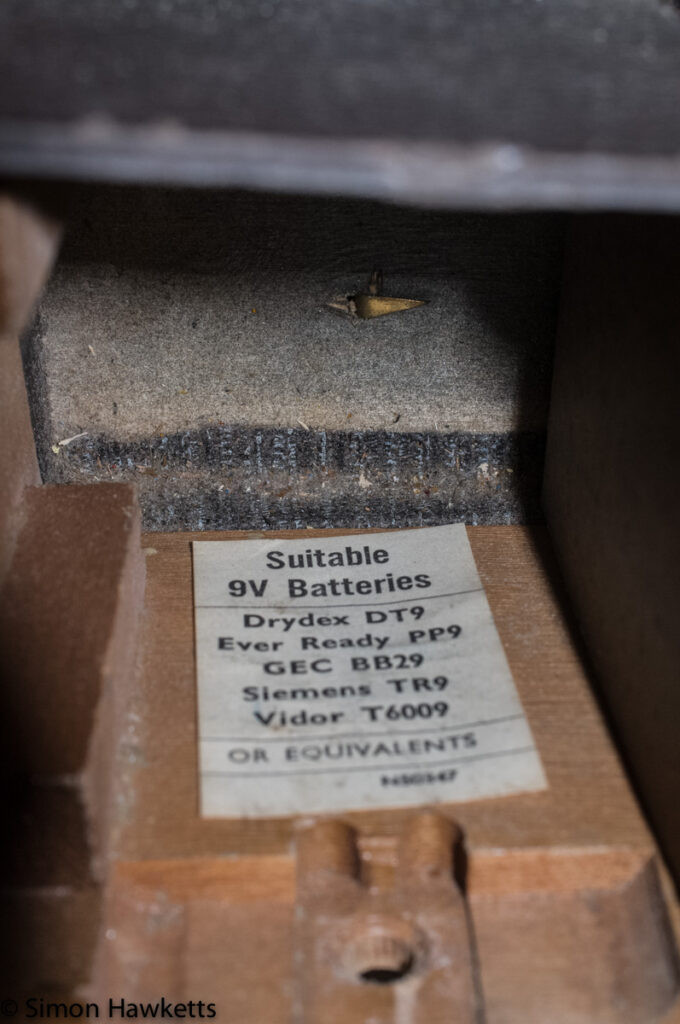
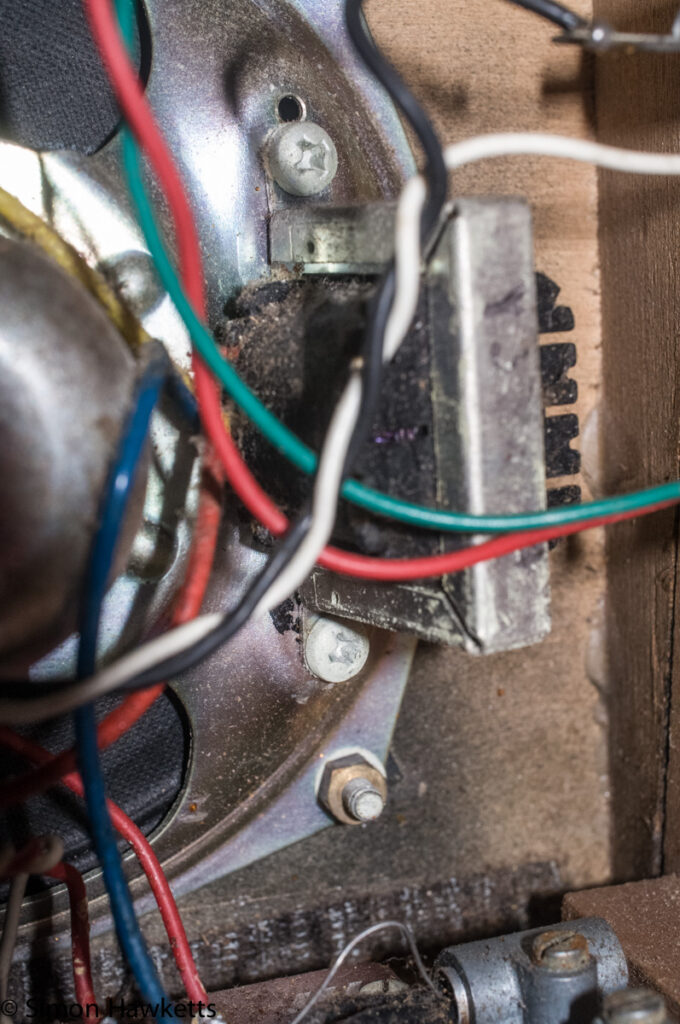

Ferguson Transistor 7 Description
The Ferguson transistor 7 or model 433, is made in a very traditional way, with a wooden frame of triangular shape which has a wooden, fabric covered back panel and a similar, fabric covered speaker grill under the controls and tuning scale.
There are very simple controls to use the radio. Three push buttons turn the radio to Medium Wave, Long Wave or off, and then there is an edge control for volume and another to tune the stations.
The tuning display is typical of radios of this age, with not only the wavelength marked in metres, but also a number of individual radio stations by name that would have been broadcasting at the time the radio was made. I particularly notice that Luxemburg is listed (abbreviated to Luxemb'g), and I remember listening to that station late at night because it was one of the few stations which played pop music at that time.
On the side of the cabinet is a socket for an external aerial and another to connect the radio to a tape recorder. I remember as a boy having to hold the microphone of my battery powered portable tape recorder up to the speaker of our mains powered, valve radio in the kitchen to record the top twenty count down on a Sunday evening - how I would have loved to have a socket to connect up to!
One negative aspect of the design that I've found is that when you pick the unit up, your fingers naturally press into the glass which forms the panel where the tuning scale is printed. This feels as if it could lead to breaking the glass, although that thought is probably unfounded seeing that the radio is 60 years old and the glass is unbroken.
Internally, there is an aluminium plate at the top of the cabinet that holds the controls, the ferrite rod aerial mounted on a plastic bracket, and the tuning scale. The main electronics are assembled onto two PCBs mounted vertically in the middle of the case and horizontally at the bottom.
The vertically mounted PCB holds the RF and IF stages, and the bottom one is where the audio is amplified enough to feed the 4-inch round speaker fitted to the front of the unit.
In the service information, (which I've copied below) the dismantling procedure mentions pulling the cables from the PCBs before removing the PCBs for inspection. On my copy of the radio, these leads are soldered connections, so I wonder if an earlier production set used push connectors, and they were found to be unreliable?
The transistor set that powers the radio feature the notorious AF117, which, although reliable when it was originally used, is now known to have problems because of tiny tendrils of conductive material that grow internally causing shorts. I don't know for certain that is a problem with this set, but it's highly likely. I'll write a second post when I've investigated the unit during its refurbishment and describe how I fixed this issue if it turns out to be the case.
Ferguson Transistor 7 Service data
The Ferguson Transistor 7 was also known by the model number 433, and the circuit and servicing details are found in the 1962/1963 volume of the Radio & TV servicing manual by J.P.Hawker. It is on page 130, and I've included a scan of the pages below. 1

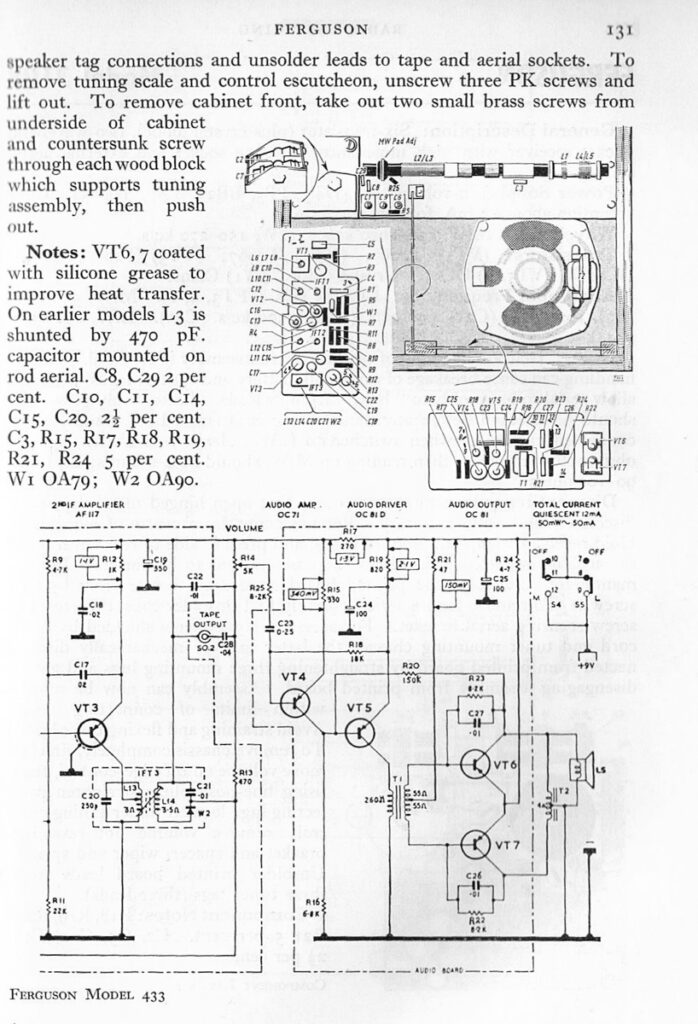
- I believe this to be OK because of the age of the books and the fact that the manufacturers would want the circuit information to be available, but if it turns out his is in any way a copyright issue I will of course remove these images. [↩]
This post is part of a series: Ferguson Transistor Radion
